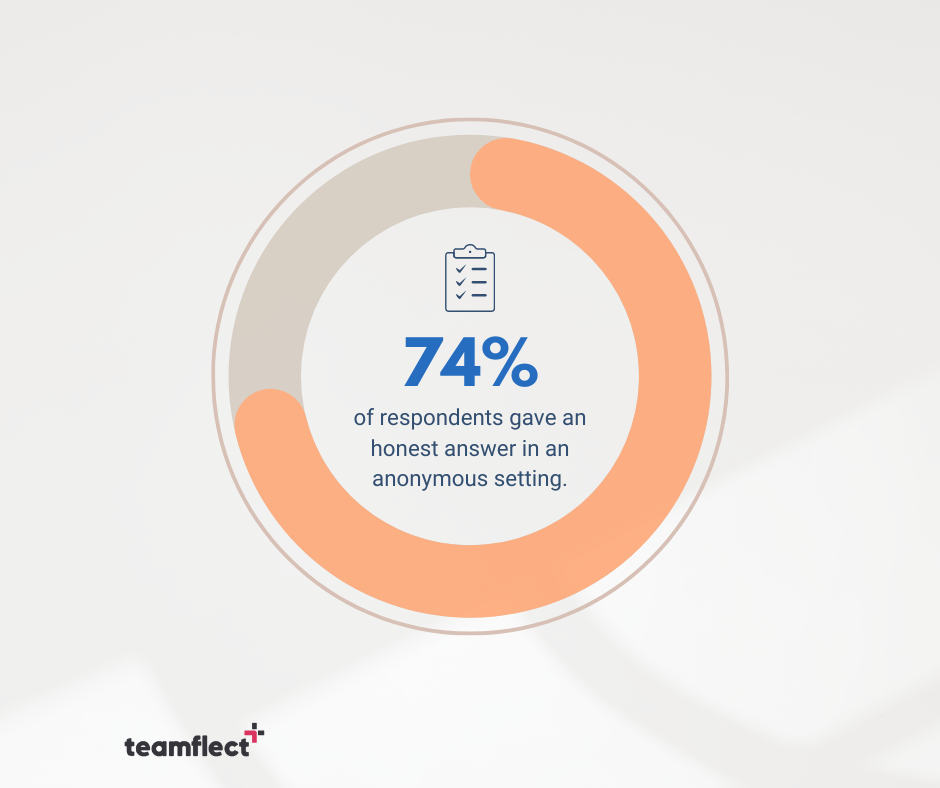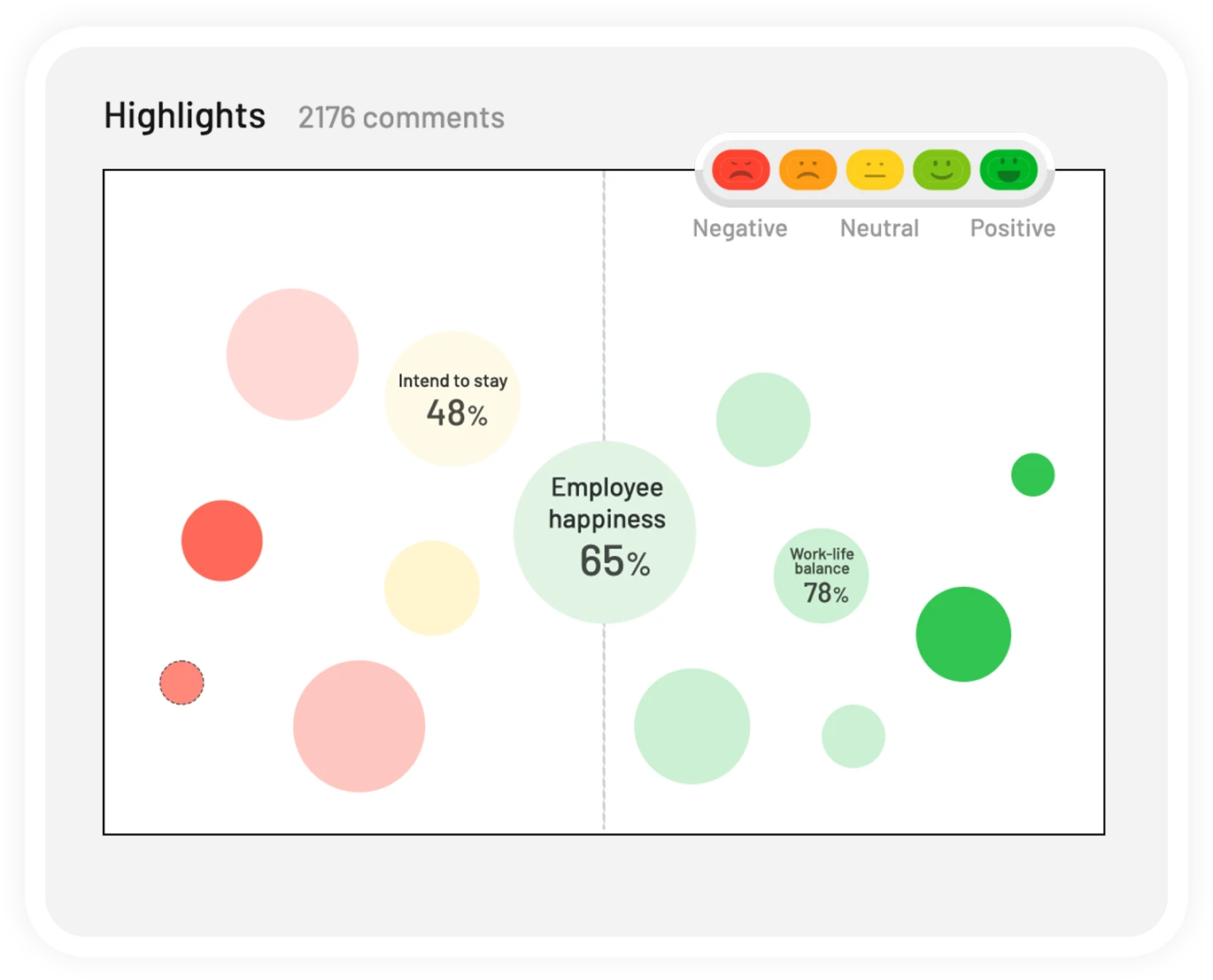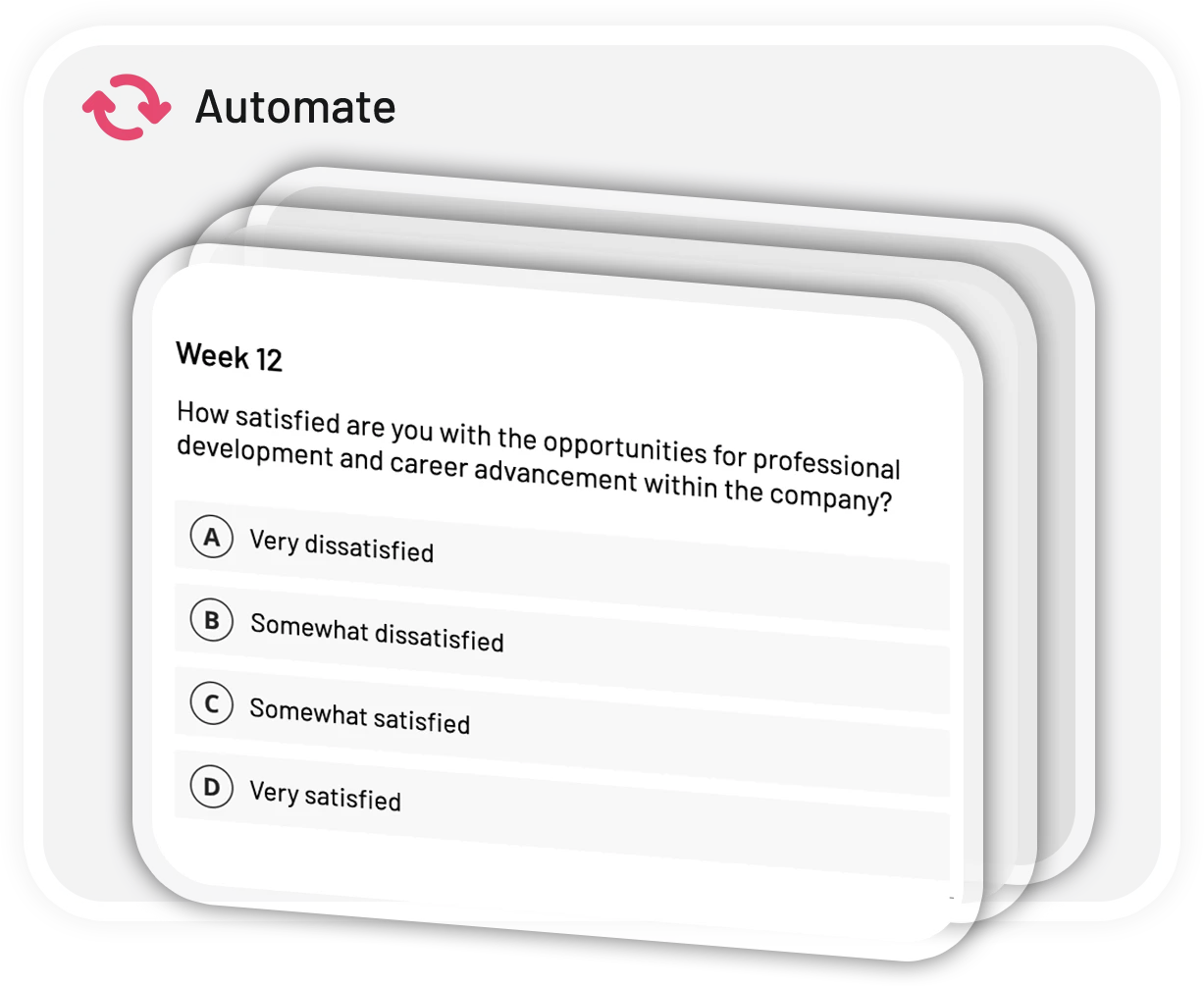We’ve talked about employee surveys before in this blog several times.
From onboarding surveys to open-ended survey questions, you can find almost anything about employee pulse surveys on our blog.
But one mystery remains – importance and implementation of anonymous employee surveys!
Anonymous employee surveys might look as easy as it gets: they are surveys used for collecting data from your employees, and also anonymous.
You don’t collect any personal data from your employees during an anonymous survey.
But there are more to anonymous employee surveys than them just being “anonymous”, and we’re here to discuss every step in this guide. Let’s begin, shall we?
Table of Contents
Benefits of Anonymous Employee Surveys
We all know the drill on the importance of employee satisfaction surveys: surveys measure your employees’ motivation and passion for their roles and your organization, while pointing out any problems or concerns they face.
All of these benefits are still valid for anonymous employee surveys, but conducting your satisfaction surveys anonymously have additional benefits we must discuss.
Here are some benefits of anonymous employee surveys:
1. Answers are More Honest
Of course, the best part of anoymous employee surveys is being anonymous! Employees can feel pressure to give higher scores and nicer answers when you can see their names and easily hold them responsible for their answers.
Okay, we hear you! You would never do that as a manager that understands the new era of business that Gen-Z created.
The one with all the boundaries and self-prioritization. But it doesn’t work that way! We’re human after all, and knowing that your personal information can be seen with your answers change a lot.
According to a study done by Ong & Weiss (2000) called The impact of anonymity on responses to sensitive questions showed that under anonymity, 74% of subjects admitted to cheating whereas only 25% confessed without confidentiality.

Although your anonymous employee satisfaction survey isn’t about cheating, it’s obvious that being anonymous will get you more honest and candid answers.
2. Eliminates Bias and Social Desirability Effect
In regular employee surveys where you can see the respondents, employees may alter their responses to present themselves in a more favorable light or go along with socially accepted norms.
This has nothing to do with honesty, and it’s actually a psychological phenomenon called the “social desirability effect” in which participants’ tendency to bias their responses in surveys to appear in a more favorable light.
Anonymity minimizes the social desirability effect, resulting in more authentic and unbiased feedback.
3. Helps Uncovering Any Potential Sensitive Issues
Certain workplace issues, such as harassment, discrimination, or interpersonal conflicts, may go unreported if employees fear backlash or discrimination.
Anonymous employee surveys provide a safe and confidential platform for employees to raise concerns and shed light on sensitive matters that may otherwise remain hidden.
If you need some evidence that anonymous employee surveys create a safe space, hear this: according to a study done by EEOC 85% of victims are more inclined to report workplace harassment if it’s truly anonymous.
This is an incredibly high statistics, and shows the true importance of anonymous employee surveys.
4. Acts as a Way to See Organizational Blind Spots
With anonymous employee surveys, you can see those blind spots and areas of concern throughout your organization that might be overlooked in other feedback channels.
Honest feedback from employees points out operational inefficiencies, communication gaps, or managerial issues that you might otherwise unnotice.
Anonymous Employee Survey Best Practices
1. Plan the Survey
Before sending out the anonymous employee survey to your employees, you should plan how to execute it. Start by defining the objectives of your anonymous surveys for employees.
What do you want to achieve after analyzing survey answers? It can be anything from improving employee satisfaction to gathering feedback on specific aspects of your company.
After deciding on your goals, you should pick the right sample size and participants. Getting the right mix of participants is essential to make sure the anonymous employee survey represents your entire organization.
Carefully choose sample size and the individuals who will take part in the survey to capture a diverse range of perspectives.
2. Use Employee Survey Software
Best way to conduct any survey in an organization is using the right employee pulse survey software. In fact, we have a whole other article on top 20 employee pulse survey tools where you can choose the software of your dreams.
But if you’re using Microsoft Teams for collaboration, you don’t need to think twice: Teamflect is the best choice for you!
Teamflect is an all-in-one employee engagement/pulse survey tool designed specifically to work best within Microsoft environment.
But there’s more to Teamflect than just being the best fit for a strong Microsoft Teams integration.
You can conduct the best anonymous surveys with guaranteed confidentiality using Teamflect, and choose from the pool of questions.

That’s not all! What happens after you conduct the anonymous employee satisfaction survey? You analyze the answers!
Teamflect has great functionality that converts the data collected from anonymous employee surveys into amazing Power BI reports, so you can use the information collected through surveys without losing any data.
Key Features
- The best anonymous employee survey tool for Microsoft Teams
- Easy to navigate dashboard
- 360-degree feedback
- Task management
- OKR management
- Customizable feedback templates
- Customizable performance review template gallery



